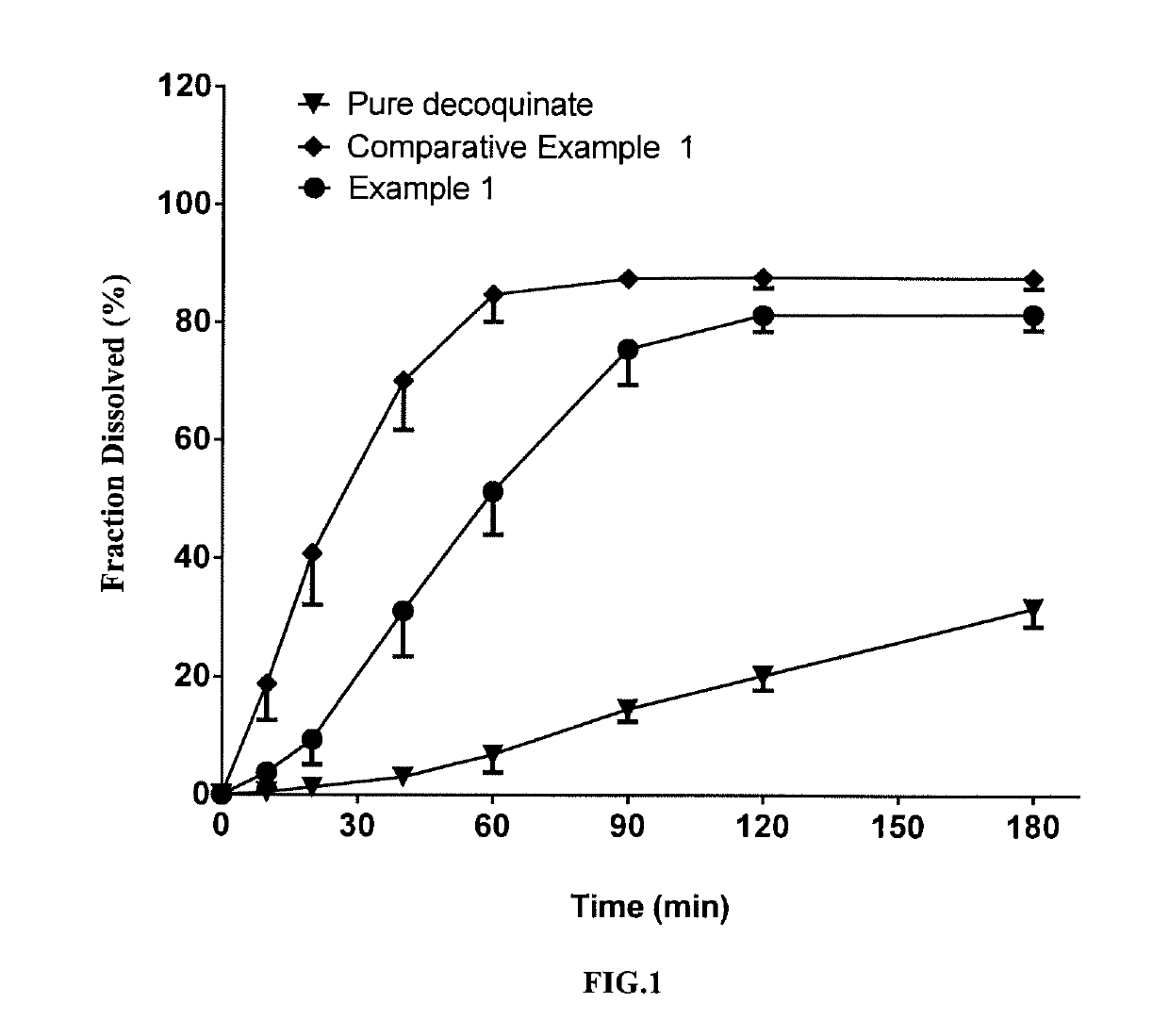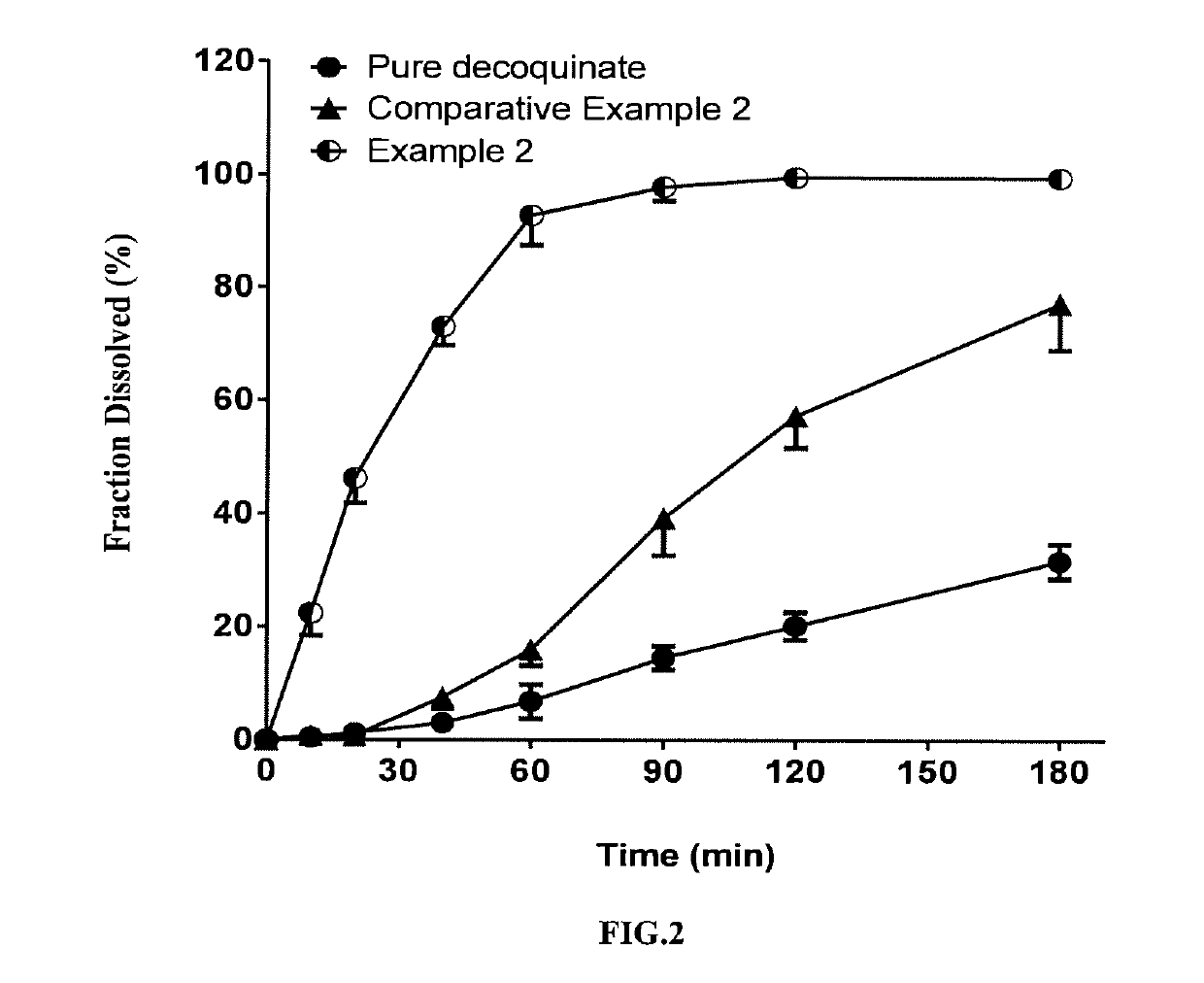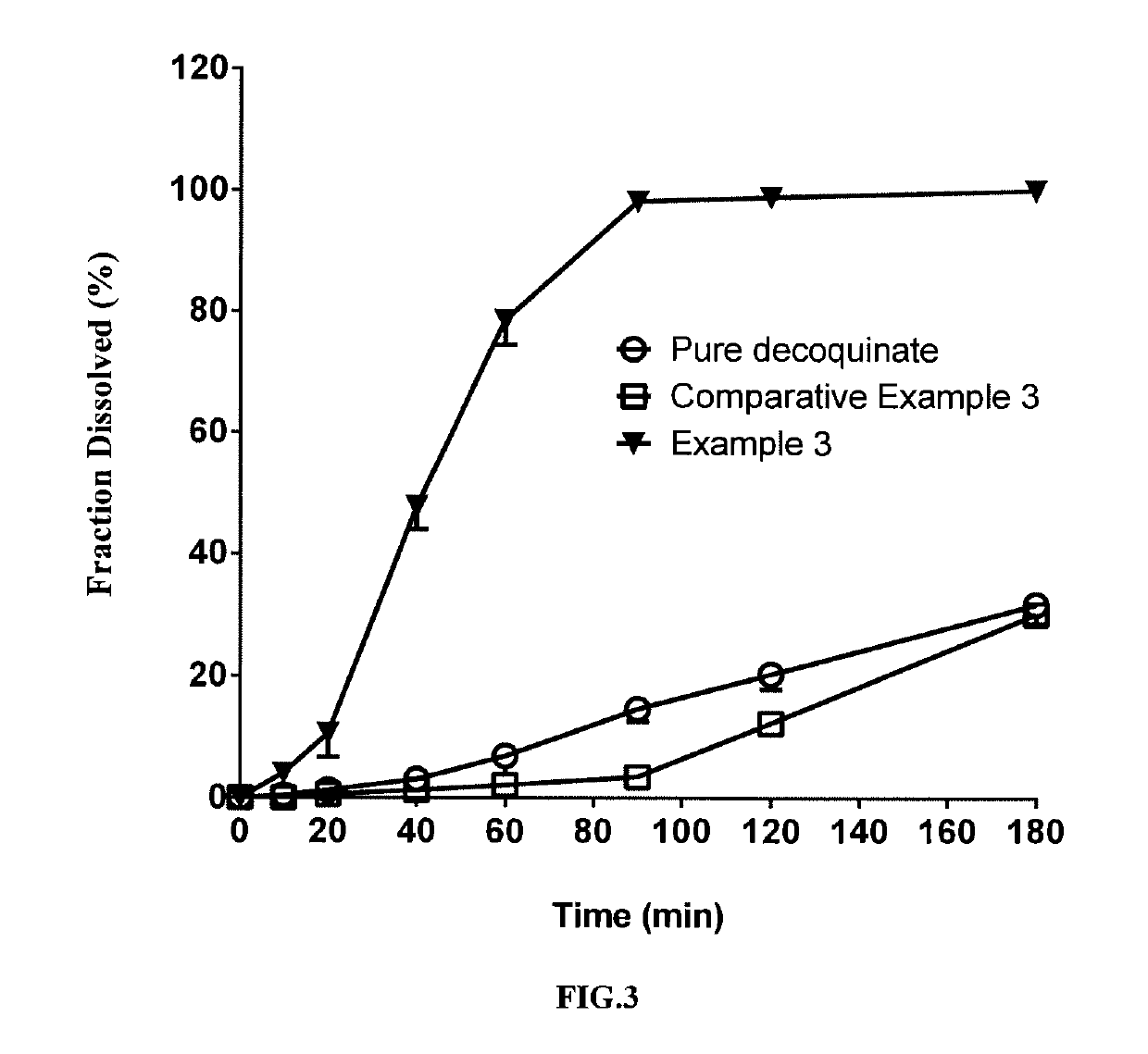Solid dispersion of decoquinate, a preparation process and its application
a technology of decoquinate and solid dispersion, applied in the field of medical technology, can solve the problems of high mortality of severe cases caused by i>plasmodium falciparum /i>plasmodium falciparum, inability to treat, and inability to infect patients, so as to reduce environmental pollution, simplify the process, and the effect of mixing
- Summary
- Abstract
- Description
- Claims
- Application Information
AI Technical Summary
Benefits of technology
Problems solved by technology
Method used
Image
Examples
example 1
[0065]In this example, a solid dispersion of DQ was prepared by a HME method from a composition for HME comprising DQ as an active ingredient, Soluplus, Kollidon VA 64 and PEG 6000. The composition for HME comprised, by percentage of the total composition weight, 10% of DQ, 53% of Soluplus, 27% of Kollidon VA 64 and 10% of PEG 6000. The specific preparation procedure was as follows:
[0066]
Decoquinate3 gSoluplus16 g Kollidon VA 648 gPEG 60003 g
[0067]The above weighed materials were blended to homogeneity. The melting temperature of the twin-screw hot-melt extruder was set to 120-160° C. When all the actual temperatures reached the set temperature, the blended were added, the screw initiated slowly with a start speed of 20 rpm, and then depending on the pressure and torque figures on the machine display, if the figures were displayed within the normal range, the screw speed was turned up to 150 rpm. The feeding materials underwent heating at different segments of barrel, mixing, meltin...
example 2
[0069]In this example, a solid dispersion of DQ was prepared by a HME method from a composition for HME comprising DQ as an active ingredient, Soluplus, Kollidon VA 64 and SDS. The composition for HME comprised, by percentage of the total composition weight, 10% of DQ, 65% of Soluplus, 15% of Kollidon VA 64, and 10% of SDS. The specific preparation procedure was as follows:
[0070]
Decoquinate2 gSoluplus13 g Kollidon VA 643 gSDS2 g
[0071]The above weighed materials were blended to homogeneity. The parameter settings for the hot-melt extruder and the operation procedures after feeding the blended material were the same as those of Example 1.
[0072]The solid dispersion of DQ prepared in the present example had a uniformed matrix and was homogeneously suspended in aqueous phase. The average particle size measured for the above suspended DQ was from 2 to 5 microns; the cumulative dissolution percentage was over 75% in 90 minutes (FIG. 2).
example 3
[0073]In this example, a solid dispersion of DQ was prepared by a HME method from a composition for HME comprising DQ as an active ingredient, Kollidon VA 64 and Soluplus. The composition for HME comprised, by percentage of the total composition weight, 20% of DQ, 62.33% of Soluplus, and 17.66% of Kollidon VA 64. The specific preparation procedure was as follows:
[0074]
Decoquinate6.0 gSoluplus18.7 g Kollidon VA 645.3 g
[0075]The above weighed materials were blended to homogeneity. The parameter settings for the hot-melt extruder and the operation procedures after feeding the blended material were the same as those of Example 1.
[0076]The solid dispersion of DQ prepared in the present example had a uniformed matrix and was homogeneously suspended in aqueous phase. HPLC analysis showed no change in the retention time and content of the active ingredient DQ in the product (FIG. 13) compared with the DQ standard (FIG. 11). The average particle size measured for the above suspended DQ was f...
PUM
| Property | Measurement | Unit |
|---|---|---|
| hot melt temperature | aaaaa | aaaaa |
| hot melt temperature | aaaaa | aaaaa |
| melting point | aaaaa | aaaaa |
Abstract
Description
Claims
Application Information
 Login to View More
Login to View More - R&D
- Intellectual Property
- Life Sciences
- Materials
- Tech Scout
- Unparalleled Data Quality
- Higher Quality Content
- 60% Fewer Hallucinations
Browse by: Latest US Patents, China's latest patents, Technical Efficacy Thesaurus, Application Domain, Technology Topic, Popular Technical Reports.
© 2025 PatSnap. All rights reserved.Legal|Privacy policy|Modern Slavery Act Transparency Statement|Sitemap|About US| Contact US: help@patsnap.com



